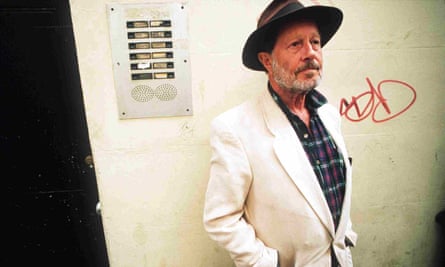I was filming in Florida in the spring of 1972. My agent phoned to tell me a fellow named Nic Roeg wanted to speak with me about filming Daphne du Maurier’s Don’t Look Now. I didn’t know him. Didn’t know the story. So I bought a book of her stories and read it, read the script and then I screened Walkabout and Performance, the film he’d co-directed with Donald Cammell. I liked everything.
They gave me his phone number and I called him in London. He answered. There was a lot of background barking. A cacophonous chorus of Jack Russells. He and I talked through it. Seriously. Deliberately. Then I told him that I didn’t think the story’s end was correct, that in my life I’d had a lot of experience with extrasensory perception and I didn’t think it should be used as an instrument of terror, that John, the character he wanted me to play, should not be killed by it, but saved by it. I believed I’d made my point and finished talking.
I thought the line had gone dead.
I knew it hadn’t because the dogs were barking, but Nic was silent. The silence was finally broken by nine implacable words. “Do you want to do the film or not?”
I stopped breathing. All the lights went out. And then they all came back on. Brighter than they’d been before. For the first time in my working life, I accepted in my heart of hearts that a film-maker makes the film and I would be the film-maker’s accomplice, Nic’s paint. His brush. He would tell me what to do and I would do it.
I said yes.
I think the dogs stopped barking. I don’t remember hearing anything from them. I don’t remember hearing anything but Nic saying, “Good”. When we hung up I was happier than I’d ever been. But not as happy as I would be working for him.

I have vertigo. When I came to shoot in the little basilica the day the gantry breaks loose and John hangs for dear life to a rope swinging 50ft above the marble floor, Nic was pulling his hair out. The Italian stuntman who was supposed to double me for the fall had quit because he didn’t think the insurance was sufficient to take care of his family if he fell to his death. Nic was looking all around, saying with great anguish, “We only have this church for today”. I said, “I’ll do it.”
I’ll do it? I can’t drive a car on the coast road from San Francisco to Los Angeles because my vertigo paralyses me, and I stood there and said: “I’ll do it.” Nic said, “You’ll just fall and we’ll pull you into the platform,” the platform they were shooting from. They fitted me with a Kirby wire, I climbed up to the gantry, Nic yelled, “Action!” and someone who looked suspiciously like Albert Pierrepoint threw a two-by-10 at my back and I dropped. The rope tightened, and I swung over to the platform. There were grips standing there, holding what looked like shuffleboard sticks. Aiming them at me. And as soon as I got close, Nic yelled: “Push him out!”
And away I swung. Twisting back and forth out there until Nic yelled “Cut!” and they pulled me in. John didn’t have vertigo. I always do.
He was a genius, Nic. A visionary. He made a love scene between a grieving wife and her husband with no cries of passion, no sounds of orgasm, no words. All you hear is Pino Donaggio’s music as Nic intercuts their making love with them getting dressed to go out to dinner. Magical. You don’t see that scene as a voyeur. You watch it and it reminds you of yourself, of you being loving and you being loved.
We decided it would be wisest not to shoot John’s death scene until we’d done everything else, in case the unreliable prop knife failed and my throat would be cut, spilling red.
Fragmented, abstract images colour and tell his stories. Look at Omar Sharif on a camel, coming from the other end of the desert towards the camera. That’s Nic. Look at the Sahara’s empty foreground, and suddenly the smokestacks of a steamer crossing from left to right along the unseen Suez canal. That’s Nic. He was the was the first to use Panavision’s R-200°, which meant he had 15 degrees more shutter for Don’t Look Now than the 185°s that were the best before.
He was everything I ever wanted from a film-maker. He changed my life for ever. Francine and I asked him if we could name our firstborn after him. He said yes.
Our glorious son is named Roeg.










